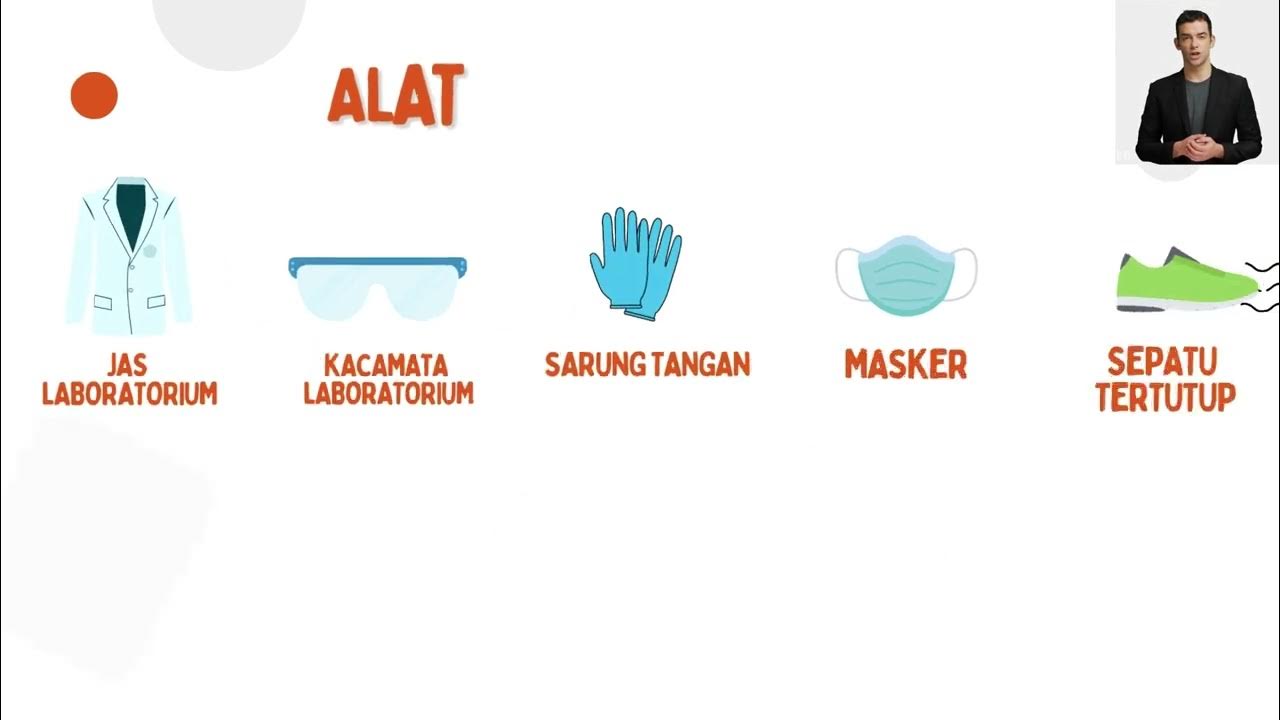Good Microbiological Practices and Procedures (GMPP) 1: personal protective equipment (PPE)
Summary
TLDRThis video provides comprehensive guidance on using personal protective equipment (PPE) in the laboratory. It emphasizes the importance of proper selection, fit, and use of PPE like laboratory coats, gloves, eye protection, and footwear to protect against harmful materials. The video covers the correct procedures for wearing, maintaining, and disposing of PPE, as well as safety measures for hand hygiene. Clear instructions are given on how to properly decontaminate and store reusable PPE, ensuring safety and preventing cross-contamination in laboratory settings.
Takeaways
- 😀 Laboratory coats act as the final defense against biological and chemical hazards, and should fit correctly to ensure maximum protection.
- 😀 PPE, including laboratory coats, gloves, footwear, and eye protection, should be carefully selected based on the specific laboratory tasks and potential hazards.
- 😀 Gloves must be checked for defects, such as holes or tears, before use to ensure they provide adequate protection. Damaged gloves should be immediately replaced.
- 😀 Gloves are single-use and should never be reused, as disinfectants can weaken the material, compromising their protective qualities.
- 😀 Laboratory coats should be stored separately from personal clothing and other lab coats to prevent cross-contamination.
- 😀 Eye protection, such as goggles or face shields, is necessary to protect the eyes from splashes, particles, or UV radiation, and must fit properly for effective coverage.
- 😀 Always wear gloves that are properly sized to avoid stretching them, which could lead to material failure or exposure to hazardous materials.
- 😀 Eye protection should be decontaminated after use and stored away from direct sunlight to prevent degradation of materials.
- 😀 Proper hand hygiene, including thorough hand washing after PPE removal, is crucial to prevent contamination after working in the lab.
- 😀 Reusable gloves must be cleaned according to the manufacturer's instructions and stored away from UV light to prevent degradation over time.
- 😀 PPE must be removed carefully to avoid contamination of hands and the surrounding environment, with particular attention to correct glove removal techniques.
Q & A
Why is PPE important in a laboratory environment?
-PPE (Personal Protective Equipment) is essential because it forms the last line of defense between laboratory workers and harmful materials, preventing exposure to biological, chemical, and other hazardous substances.
What are the different types of laboratory coats mentioned in the transcript?
-The transcript mentions several types of laboratory coats: V-neck, front-fastening coats, Hynek side-fastening coats (for extra splash protection), back-fastening gowns, and disposable laboratory coats for visitors.
How should laboratory coats be stored?
-Laboratory coats should be stored on a peg, either in the laboratory or in a lobby area for donning before entering. They should be kept separate from personal clothing to prevent cross-contamination.
Why should laboratory coats not be laundered at home?
-Laboratory coats should not be laundered at home because they may be contaminated with hazardous materials. Instead, they should be cleaned on-site through autoclaving or soaking in appropriate disinfectants.
What are the key considerations when selecting gloves for laboratory work?
-When selecting gloves, it is important to choose the appropriate material based on the type of hazardous material being handled, such as biological agents or chemicals. Gloves should also be checked for defects, fit correctly, and be disposed of if visibly contaminated.
How can you check if a glove is defective before use?
-To check for defects, inspect the glove for holes or tears. A simple test is to inflate the glove by gently pushing air into it; if it stays inflated, it's safe to use. If it deflates, it must be disposed of.
What is the importance of correct glove size in the laboratory?
-The correct glove size is essential because gloves that are too tight may tear or stretch, while gloves that are too large may fall off or get caught on equipment. Proper fit helps maintain glove integrity and safety.
Why is it crucial to remove contaminated gloves properly?
-Proper removal of contaminated gloves prevents the contamination from spreading to the hands and wrists. Incorrect removal can expose the wearer to hazardous materials, increasing the risk of contamination.
What should you do if your eye protection becomes contaminated?
-If eye protection becomes contaminated, it should be removed with clean hands, decontaminated following the manufacturer's instructions, and cleaned thoroughly before being used again.
What is the recommended method for hand washing in the laboratory?
-Hands should be washed with soap or cleanser, ensuring that all areas, including the back of the thumbs, between fingers, under nails, and wrists, are scrubbed thoroughly. After rinsing with warm water, hands should be dried completely and moisturized if necessary to prevent skin irritation.
Outlines

此内容仅限付费用户访问。 请升级后访问。
立即升级Mindmap

此内容仅限付费用户访问。 请升级后访问。
立即升级Keywords

此内容仅限付费用户访问。 请升级后访问。
立即升级Highlights

此内容仅限付费用户访问。 请升级后访问。
立即升级Transcripts

此内容仅限付费用户访问。 请升级后访问。
立即升级浏览更多相关视频

Keselamatan Kerja di Laboratorium IPA Mata Kuliah Pendalaman Materi IPA

Keselamatan Kerja di Laboratorium | Tata Tertib & Simbol Bahan - Sains

Panduan Cara Pemakaian dan Pelepasan APD Level 1, 2, dan 3 dalam Manajemen COVID-19

Toma de muestras

Panduan Cara Pemakaian dan Pelepasan APD dari PAPDI

Pembuatan Media Mac Conkey
5.0 / 5 (0 votes)
